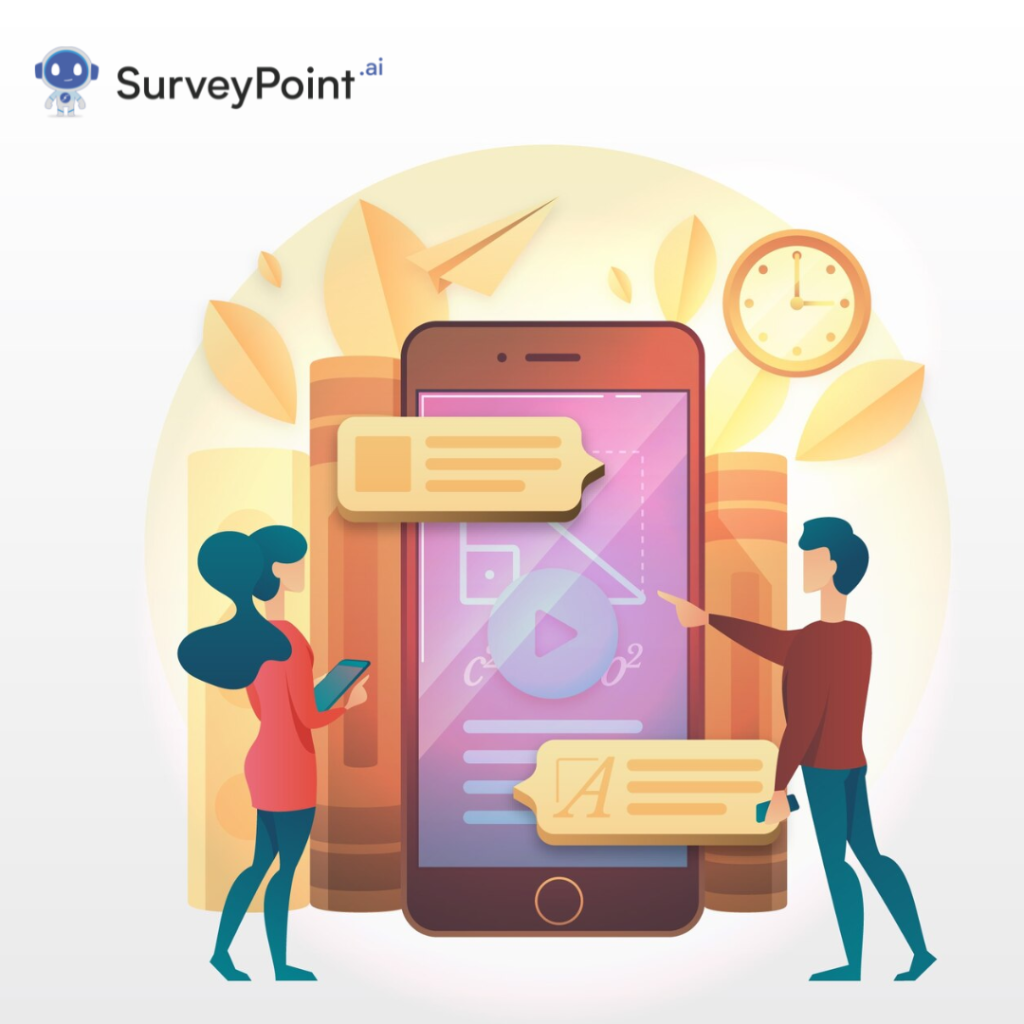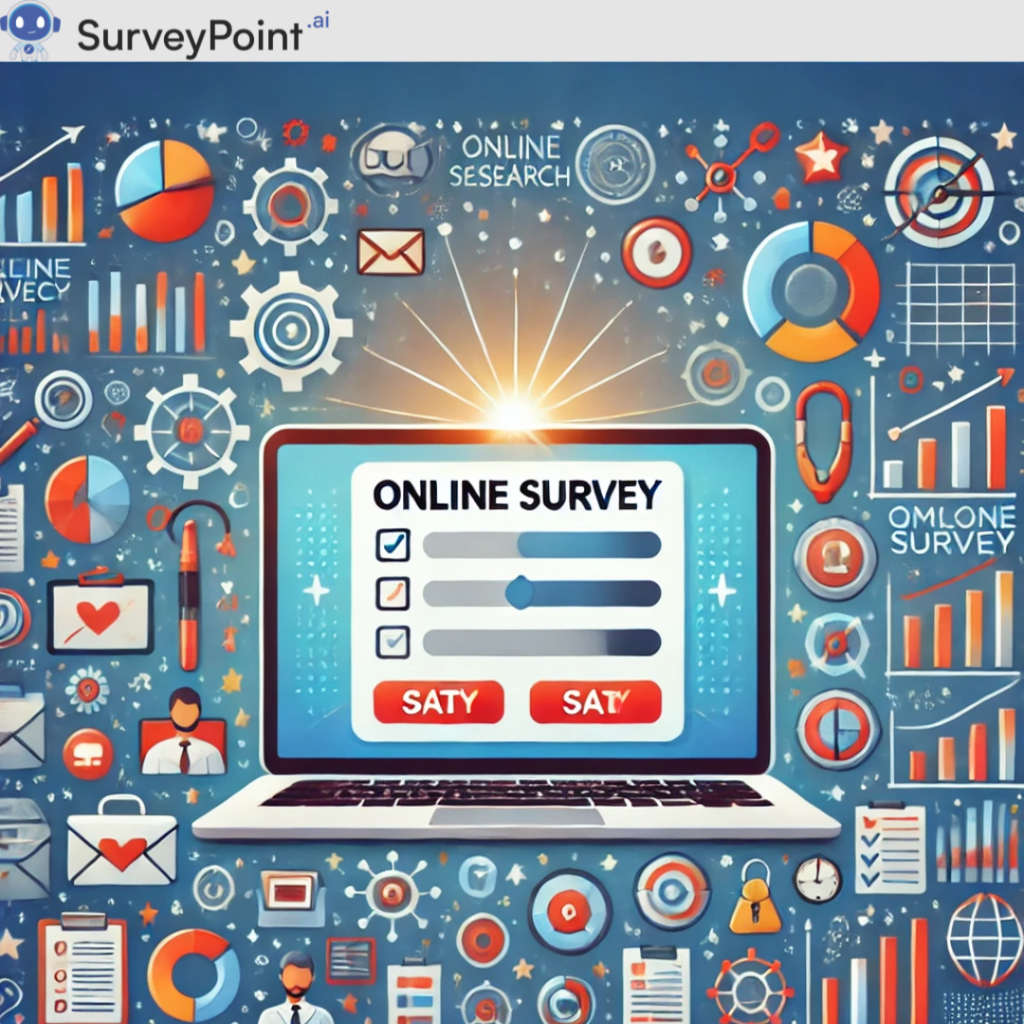
In today’s fast-paced, data-driven world, mobile technology has become indispensable across various sectors, from business to healthcare, education, and beyond. One of the most transformative uses of mobile technology is in the field of data collection. Mobile survey applications have revolutionized how surveys are conducted, making it easier, faster, and more efficient for organizations to gather valuable insights. This blog explores the concept of mobile survey applications, their evolution, benefits, challenges, and the future of mobile-based survey data collection.
What Are Mobile Survey Applications?
Mobile survey applications are digital tools designed to collect data via smartphones and tablets. These apps allow users to create, distribute, and analyze surveys in real time. They are typically used to gather feedback from respondents through various types of questions, such as multiple-choice, open-ended, Likert scale, and more. Mobile survey apps often offer features like real-time data collection, automatic syncing, offline functionality, and detailed analytics.
Mobile surveys are widely used across industries for purposes such as customer feedback, employee engagement, market research, public opinion polling, and more. With the increasing reliance on mobile devices, these apps have quickly gained popularity, offering a more flexible and user-friendly alternative to traditional survey methods, such as paper-based forms or online surveys through desktop computers.
The Evolution of Mobile Survey Applications
The concept of surveys is not new. Humans have been collecting data for centuries, dating back to the earliest forms of census-taking and market research. However, the rise of digital technology in the late 20th century drastically changed how data was collected and analyzed. The advent of the internet opened new avenues for survey distribution, allowing researchers to create and distribute online surveys via email or websites.
As mobile phones became more sophisticated, with advanced features like touchscreens, internet connectivity, and GPS, the potential for conducting surveys via mobile devices became apparent. In the early 2000s, mobile phones were primarily used for voice communication, but as smartphones emerged, their capabilities expanded, and app-based surveys started gaining traction.
The early mobile survey apps were basic in design, limited in features, and often required respondents to answer short, simple questions. However, with the release of advanced smartphones and powerful operating systems like iOS and Android, mobile survey apps evolved to support complex surveys, multimedia integration (such as images and videos), and real-time data analytics.
Today, mobile survey apps have become sophisticated platforms that offer everything from customizable survey templates to advanced reporting and analytics, pushing the boundaries of what was once possible in data collection.
Key Features of Mobile Survey Applications
1. User-Friendly Interface
One of the primary reasons for the success of mobile survey apps is their ease of use. These applications are designed with the user in mind, providing intuitive interfaces that require minimal training. Whether you’re creating a survey or responding to one, the process is straightforward, ensuring that data collection remains efficient and user-friendly.
2. Real-Time Data Collection and Analysis
One of the biggest advantages of mobile surveys is the ability to collect data in real-time. Responses are submitted instantly, allowing researchers to monitor and analyze results on the go. This immediate access to data makes it easier to identify trends and make quick decisions. Real-time analysis also means that any issues or discrepancies can be addressed quickly, improving the accuracy and reliability of the survey.
3. Offline Functionality
Mobile survey apps often come with offline functionality, allowing respondents to complete surveys even when they are not connected to the internet. This feature is particularly useful in areas with poor or unreliable internet access, ensuring that data collection can continue uninterrupted. Once the mobile device reconnects to the internet, the survey responses are automatically synced, making the process seamless.
4. Multimedia Integration
Modern mobile survey applications often support multimedia integration, such as images, videos, and audio. This feature allows researchers to create more engaging and interactive surveys that can better capture respondents’ attention. For example, a survey may include a product image for respondents to rate or a video for them to watch before answering questions. This multimedia functionality helps increase engagement and can lead to more accurate, thoughtful responses.
5. Customizable Survey Templates
Mobile survey apps often come with a variety of pre-built templates for different types of surveys, such as customer satisfaction surveys, employee feedback surveys, or event evaluation surveys. Users can choose a template that suits their needs or customize their surveys by adding or removing questions, changing the layout, and adjusting the branding. This level of flexibility ensures that surveys can be tailored to meet the specific goals of the research.
6. Advanced Reporting and Analytics
Once the survey data is collected, mobile survey apps often include powerful reporting and analytics tools. These features allow users to visualize the data through graphs, charts, and tables, making it easier to interpret and draw meaningful insights. Many mobile survey apps also offer built-in statistical analysis tools, such as cross-tabulation and regression analysis, enabling researchers to perform advanced analyses on the collected data.
7. Survey Distribution and Targeting
Mobile survey apps allow researchers to target specific groups of respondents based on criteria such as location, demographics, and behavior. For instance, survey creators can set filters to ensure that only respondents in a particular geographic area or with a specific profile can participate in the survey. This targeted approach improves the quality of the data and ensures that the survey results are relevant and actionable.
Benefits of Mobile Survey Applications
1. Accessibility
Mobile devices are ubiquitous, with billions of people around the world using smartphones and tablets. This widespread adoption makes mobile surveys an ideal tool for reaching a broad audience. Whether you’re collecting data from employees, customers, or the general public, mobile surveys ensure that participants can easily respond to surveys at their convenience, from anywhere, at any time.
2. Increased Response Rates
Mobile surveys tend to have higher response rates than traditional survey methods. This is largely due to the convenience factor—people are more likely to complete a survey when they can do so on their mobile devices, without needing a computer. Push notifications and in-app reminders also help prompt users to complete surveys, further boosting response rates.
3. Cost-Effective
Mobile survey apps offer a cost-effective solution for data collection. Traditional methods, such as telephone or face-to-face surveys, often require significant resources, such as personnel, transportation, and materials. With mobile surveys, organizations can avoid these costs by using a digital platform that allows for immediate data collection and analysis. Additionally, the ability to reach a large audience with minimal effort reduces overall expenses.
4. Real-Time Feedback
With mobile surveys, feedback is collected and analyzed in real time. This immediacy allows organizations to make informed decisions quickly and adjust strategies or actions accordingly. For example, a company conducting a product survey can identify issues with the product or areas for improvement as soon as responses are submitted, enabling them to address concerns before they escalate.
5. Better Data Quality
The ease of use, interactivity, and flexibility of mobile survey apps contribute to better data quality. Respondents are more likely to stay engaged and provide thoughtful, accurate responses when completing surveys on their mobile devices. Additionally, mobile surveys can include built-in validation checks to ensure that responses are consistent and accurate, helping to reduce errors and improve data reliability.
6. Environmental Impact
By reducing the need for paper-based surveys and printed materials, mobile surveys have a positive environmental impact. Organizations can conduct surveys without relying on physical resources, helping to reduce waste and carbon footprints. This sustainability aspect appeals to organizations that are looking to align with environmentally friendly practices.
Applications of Mobile Surveys
Mobile surveys are used in a wide range of industries and sectors. Here are some common applications:
1. Market Research
Market research is one of the most prominent fields where mobile survey apps are utilized. Companies use mobile surveys to collect feedback on products, services, advertising campaigns, and brand perceptions. By reaching a wide and diverse audience, market researchers can gain valuable insights into consumer behavior, preferences, and trends.
2. Customer Feedback
Many businesses use mobile survey apps to gather customer feedback on their products or services. Customer satisfaction surveys are often sent out after a purchase or interaction, allowing businesses to understand what customers liked or disliked. This feedback can be used to improve customer service, refine product offerings, and enhance the overall customer experience.
3. Employee Engagement
Organizations often use mobile surveys to assess employee engagement and gather feedback on workplace conditions. These surveys can measure employee satisfaction, identify areas for improvement, and gauge morale. By conducting mobile surveys, companies can gather honest feedback from employees in a confidential and convenient manner.
4. Event Feedback
Event organizers use mobile survey apps to collect feedback from attendees after conferences, trade shows, or other events. This feedback helps event planners understand what went well and what could be improved for future events. Mobile surveys allow attendees to submit their responses quickly and easily, making it more likely that valuable feedback will be provided.
5. Public Opinion Polls
Government agencies, think tanks, and political organizations often use mobile surveys to gauge public opinion on various issues. By reaching a broad audience, these organizations can gather data on public sentiment and use the information to inform policies, campaigns, or decision-making processes.
Challenges of Mobile Survey Applications
While mobile survey apps offer numerous benefits, they are not without challenges. Some of the key challenges include:
1. Data Privacy and Security
As with any form of data collection, mobile surveys raise concerns about data privacy and security. Survey respondents may be reluctant to share personal information if they are unsure about how their data will be used or stored. Mobile survey apps must adhere to strict security protocols and comply with privacy regulations, such as GDPR, to ensure that respondents’ data is protected.
2. Respondent Bias
Although mobile surveys can reach a wide audience, they may be subject to respondent bias. For example, people who own smartphones may have different characteristics or opinions than those who don’t, which could skew the results. Additionally, mobile surveys may attract a younger demographic, leaving out older populations who are less likely to use smartphones.
3. Technical Issues
Technical issues, such as app crashes, slow load times, or poor internet connectivity, can negatively impact the survey experience for respondents. These issues may lead to incomplete responses, frustrated users, and inaccurate data collection.
4. Survey Fatigue
With the increasing number of mobile surveys being sent to users, respondents may experience survey fatigue. Over-surveying can lead to lower response rates, incomplete surveys, or disengagement. To combat this, organizations should strive to send relevant surveys, keep them concise, and avoid overburdening respondents with frequent requests.
The Future of Mobile Survey Applications
As mobile technology continues to evolve, so too will mobile survey applications. The future of mobile surveys is likely to be shaped by several key trends:
1. AI and Automation
The integration of artificial intelligence (AI) and automation into mobile survey apps will likely play a significant role in the future of data collection. AI-powered chatbots, for example, can conduct surveys in a conversational manner, making the experience more engaging and personalized. Automation will also streamline data analysis, making it easier to generate insights from large datasets.
2. Integration with Other Tools
In the future, mobile survey apps will likely integrate with other business tools, such as customer relationship management (CRM) systems, marketing platforms, and analytics tools. This integration will allow organizations to gather data more efficiently and use it to inform broader business strategies.
3. Enhanced Personalization
Mobile survey apps will continue to evolve to offer even more personalized experiences for respondents. For example, surveys may adapt in real-time based on previous answers, creating a dynamic survey experience that feels more relevant to the respondent. This level of personalization will improve engagement and the quality of the data collected.
4. Virtual and Augmented Reality (VR/AR)
As VR and AR technologies advance, mobile surveys may incorporate immersive elements to enhance the survey-taking experience. For example, respondents may interact with 3D models or virtual environments to provide more detailed feedback on products or experiences. This integration of immersive technologies will open up new possibilities for data collection.
Conclusion
Mobile survey applications have transformed the way data is collected, offering unprecedented convenience, flexibility, and efficiency. They have become an indispensable tool for organizations across various industries, helping them gather valuable insights in real time. With their ability to reach large, diverse audiences and provide instant feedback, mobile surveys are poised to continue playing a central role in the future of data collection.
As technology continues to evolve, mobile survey apps will become even more advanced, incorporating artificial intelligence, immersive experiences, and greater integration with other business tools. However, as with any technology, there will always be challenges to address, particularly around data privacy and respondent bias. Nevertheless, the benefits of mobile surveys far outweigh the challenges, making them an essential tool for modern organizations.
In a world where data is king, mobile survey applications are an invaluable asset for any organization looking to understand its customers, employees, or audience more effectively.




